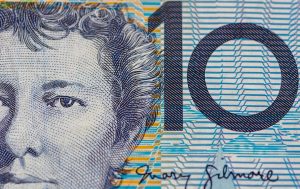USD/JPY Analysis
- Japan’s FX Moves: Japan’s Finance Minister, Shunichi Suzuki, stated that the government is closely watching foreign exchange (FX) movements and is prepared to take appropriate action if necessary. However, he refrained from commenting on specific FX levels, engaging in standard rhetoric aimed at supporting the yen. USD/JPY currently trades near 155.39, at the lower end of its Asian range.
- Current Account Data: Japan’s fiscal year (April 2023 to March 2024) ended with a current account surplus of 25.34 trillion yen, the largest ever recorded. This surplus indicates Japan is lending to the global economy by exporting more than it imports.
- USD/JPY Trends: The USD/JPY pair sharply rebounded after a plunge from 160.24 on April 29 to 151.86, suspected to have been influenced by Bank of Japan (BoJ) interventions. It now consolidates around 155, and may oscillate within a one-yen range around the 155 handle, barring significant U.S. economic news (e.g., CPI on May 15) or U.S. interest rate movements.
- Importer Demand: Strong demand from Japanese importers, particularly after Golden Week holidays, has driven USD/JPY upwards. The pair climbed to 155.95 on May 9 and 10, following a dip to 155.27. Importers are purchasing USD, triggered by knock-outs at 152.00, 155.00, and 160.00.
- Retailer Activity: Retailers holding long JPY positions ahead of the 155 level, anticipating BoJ intervention, have also recently shown buying interest.
- Technical Outlook: The USD/JPY downside appears limited. The latest rebound occurred after touching the 55-day moving average support at 152.21 on May 10.
- Upside Constraints: On the upside, recent data suggests a cooling U.S. labor market, potentially capping U.S. yields. The Producer Price Index (PPI) on May 14 and Consumer Price Index (CPI) on May 15 will be crucial to USD/JPY trends.
GBPUSD Analysis
- BoE Decision: The Bank of England (BoE) maintained its interest rate at 5.25%, a 16-year high, but signaled an eventual rate cut aligning with European peers. Two out of nine members of the Monetary Policy Committee voted to reduce the rate to 5%.
- Market Response: GBP/USD fluctuated sharply as the BoE indicated confidence in reducing borrowing costs in the near future. While inflation has significantly declined, it remains above the 2% target.
- Voting Split: The rate hold was supported by seven committee members, while two preferred an immediate rate cut. Previously, only one member advocated for an immediate reduction.
- Inflation Trends: Inflation decreased to 3.2% in March from 3.4% in February. Lower interest rates generally lead to a weaker sterling, as investors see reduced returns.
- JPMorgan’s Perspective: JPMorgan analysts noted the BoE is reluctant to commit to a specific monetary path but has turned dovish due to downward inflation forecast revisions.
- Market Expectations: The BoE is open to a June rate cut, with a 56% probability, but a reduction in August is more likely. Further inflation or wage data may influence timing.
Conclusion
The USD/JPY appears constrained by both technical and market factors, and potential intervention remains a risk. Meanwhile, the BoE hints at rate cuts, aligning with market expectations for June or August, amid declining inflation. Both currencies are poised for dynamic movement based on economic data and central bank actions.





